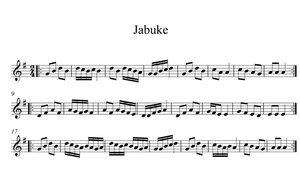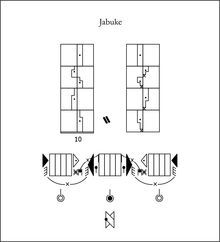JABUKE
Jabuke was the favorite dance of young and old, perhaps due to its simplicity, probably to its three-person nature. Two women dance it with a man placing their hands on that shoulder of him where they stand. Their other hand holds his hand behind their backs. These three-person units formed either a closed or an open circle, lining up behind each other in the dance hall. Sometimes the best dancers led the line; on other occasions, this had no significance. The line, while stepping, moved more forward than backward, thus moving all around the room anticlockwise. It is a new fad that the units may turn around its nucleus, that is around the man.
The structure of the songs correlates to the lyrics of Marice kolo (e.g., the insertion of the word jabuke into the 10-syllable line).
Jabuke is thought to have appeared in the 1930s. It was brought to Pécsudvard from Hercegszántó by Patak.
Jabuke is known by the Baranya Sokac as well, calling it by the same name or Jabučice, Jagodice. A three-person form analogy is the dance of the Gara Bunjevac, Keleruj, or a music analogy from Slavonia, Žita, or the widely known song from the period between the wars with the beginning line Došlo pismo iz Bosne...
MUSIC
VIDEO




